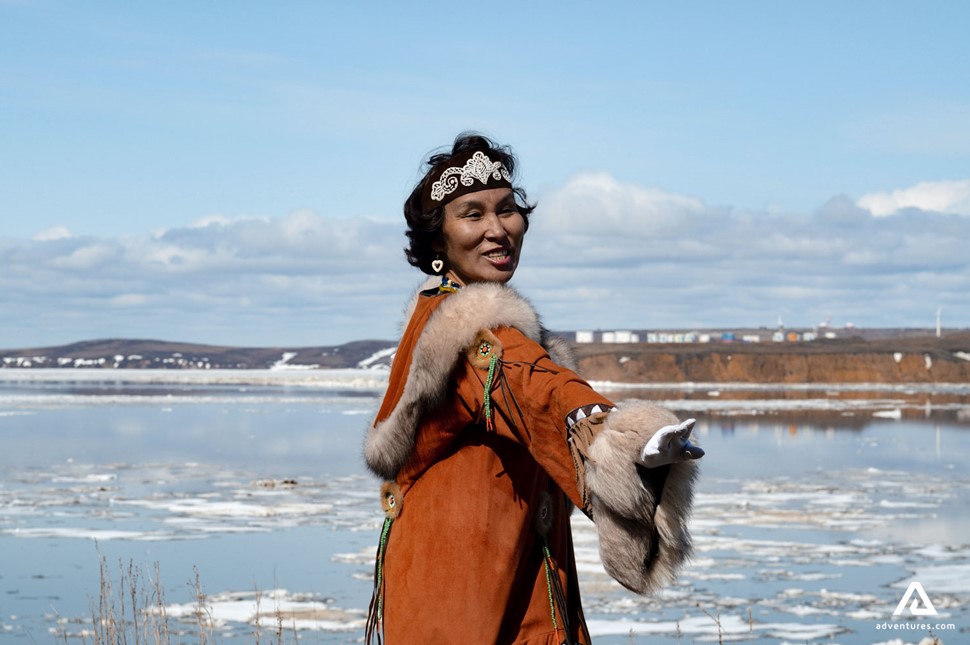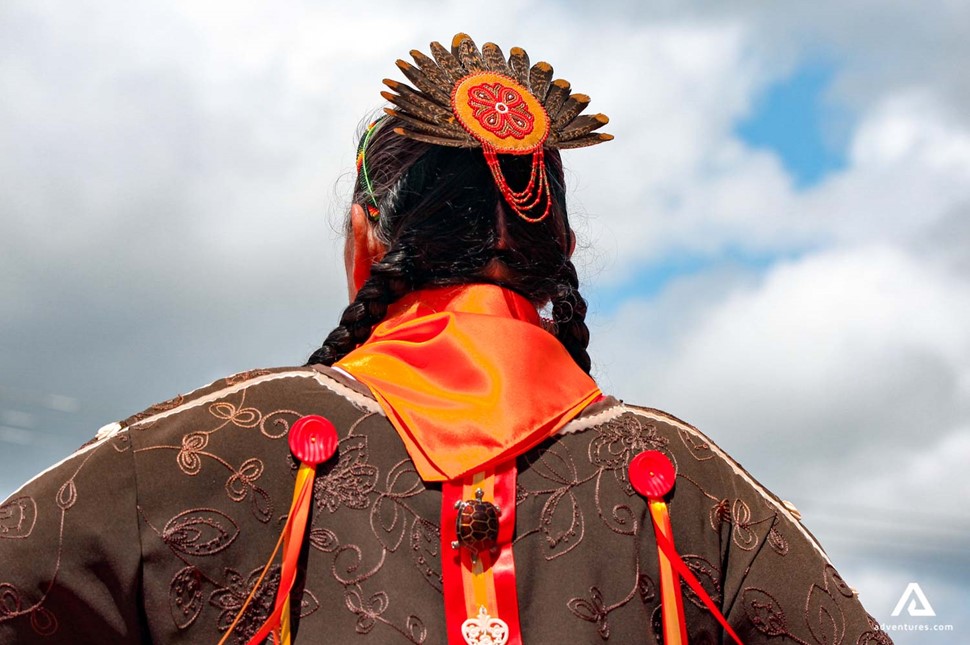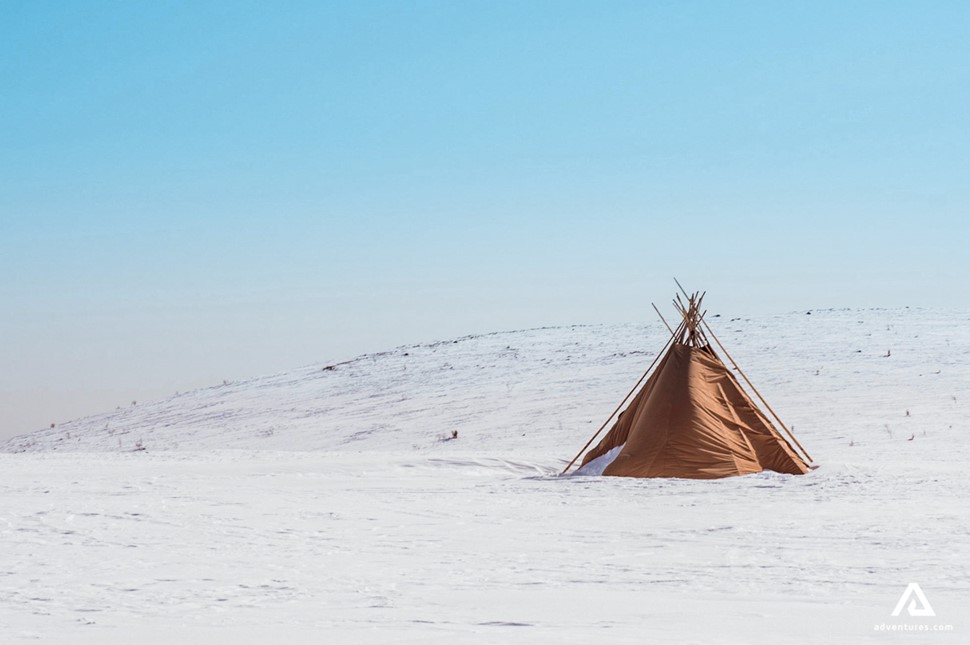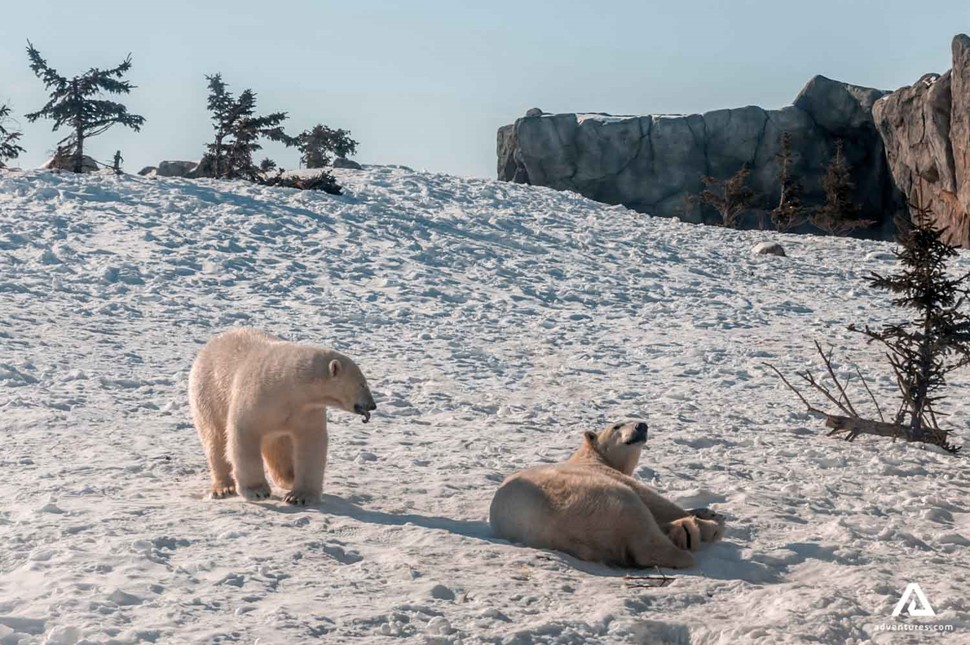Currency:
USD
ISK
USD
EUR
CAD
SEK
DKK
NOK
GBP
Immerse yourself in Canada's Aboriginal cultures and experience some of the most unique, interesting and ancient cultures on the entire planet!
The Aboriginal or Indigenous peoples of today’s Canada can be broadly separated into three distinct groups: Inuit, Métis and First Nations peoples. They are the original inhabitants of Canada and make up around 5% of the current population, with cultures complex and fascinating.

We offer a variety of chances to explore the Aboriginal cultures, especially the Inuit people who reside in the Northern region of Nunavik. All of our tours are respectful and immersion-based, reflecting the deep partnership that we have developed with Aboriginal community leaders.
The Inuit people were historically semi-nomadic, traveling to various different locations following mild weather patterns and herd migrations. Hunting plays a crucial role in Inuit society and knowledge about rich hunting areas is passed down from generation to generation.

Nunavik is the northern corner of Quebec. Sprawling over a total nearly 35,000 square miles, it’s roughly twice the size of Britain. It contains just 14 isolated villages, which are not connected by roads, making it an untouched place of incredible natural beauty. The entire region can only be accessed by air, and local transport is mostly by snowmobile, bush plane or ATV! Its unofficial capital and administrative center, Kuujjuaq, has around 2,400 residents – a bustling metropolis in Nunavik terms!
The Inuit people have always believed in respecting the environment and a holistic view of the bond between all living and nonliving things. Traditional Inuit religion is based on animism, and centers around the belief that all objects are living things and have a spirit. Many Canadian Aboriginals are now Christian, but aspects of the belief in animism remain in Inuit culture.
If you’re interested in learning more, you check out our Aboriginal culture tours!
Can you also give an idea of where they are geographically. How many exist today, are they predominantly in Nunavik, etc.
According to a 2019 census, 90% of the people of Nunavik identified as Aboriginal, meaning that around 18% of Canada’s total Inuit population reside in Nunavik. It is managed by the Makivik Corporation, which was established following the historic James Bay and Northern Quebec Agreement in 1978. Makivik, which in Inuktitut means “To Rise Up,” is a fitting name for the organization, whose directors are democratically elected to promote the interests of Aboriginals in Nunavik.

The history of the people of Nunavik is entwined with the human colonization of the world. Common scientific consensus holds that humans first reached the Americas via the land bridge that connects Asia with the Arctic, gradually making their way up the whole continent. These pre-Inuit groups gradually moved through Canada and the rest of the Arctic, arriving in Nunavik around 4,500 years ago.
These initial human pioneers lived in Nunavik for around 1,500 years. They settled on the east coast of Hudson Bay. This human population is now known as the Dorset, who became renowned among the archaeological community for their incredible art. Experts currently dispute exactly what happened to this early human community, with some believing that they disappeared around 500 years ago and others believing they remained in the area and their descendants mingled with later migrations.
The Thule (the ancestors of the present-day Inuit) moved into North Canada around 1,000 CE. They introduced technology that was much better adapted than their pre-Thule counterparts to the cold conditions of the Arctic. They colonized Nunavik around the 13th century, with Thule settlements first appearing on the coast of the Hudson Strait and Ungava Bay.
They thrived in the harsh Arctic conditions for more than 500 years until European explorers sailed into the Arctic in the late 16th century. The Thule sporadically interacted with the Europeans for the next couple of centuries, until Europeans began establishing fur trading posts in the latter half of the 18th century. This dramatically changed both the technology and culture of the Inuit of Nunavik, altering their traditional nomadic way of life.
The 20th century brought more changes forcing the Inuit to stay in one place. In 1975, the Inuit signed the James Bay and Northern Quebec Agreement, giving them control over the economic and social development of the region. This sparked a renaissance in Inuit culture, preserving the rich cultural heritage that we know today.
Nunavik is a wildlife paradise, offering a host of different wildlife watching opportunities. Expect to see the Arctic big three, along with a plethora of fascinating marine creatures and the spectacular Arctic tundra.
Polar Bear
The Canadian polar bear is a large carnivorous predator that primarily feeds on large marine mammals that it hunts on the sea ice. They are found in seven of the 13 Canadian provinces, namely Yukon, Northwest Territories, Nunavut, northern Manitoba, Ontario, and Quebec, as well as Newfoundland and Labrador.
You’ll be able to see the Canadian polar bear during our Aboriginal tours, offering the tantalizing opportunity to see one of the largest predators in the world in the flesh.

Muskox
Muskoxen inhabit the frozen Arctic,roaming the tundra in search of plant life that is hidden beneath the snow. During the winter, they use their specially adapted hooves to dig through the snow and eat. They can measure up to 9 feet (2.5 m) and weigh up to 900 lbs (410 kg), making it one of the most impressive animals to see in the flesh.
Caribou
A large and impressive member of the deer family that can reach up to 7 feet in length (2 m) and up to 400 lbs (180 kg) in weight. They are most notable for the large antlers of the males of the species. Caribou are the final member of the Arctic big three and can be seen on our Aboriginal tours.
Marine Animals
You may also see beluga whales, seals, eider ducks and thousands of gulls as they head towards the Arctic Char fishing frenzy in the summer.
4-day tour (available all-year round) – Visit the village of Puvirnituq in Nunavik, explore the iconic Arctic tundra, see incredible Arctic wildlife and learn how to build a traditional Inuit igloo on this amazing 4-day tour. You’ll also be able to observe traditional fishing practices and may see the dancing colors of the Northern Lights illuminate the night sky.
5-day tour (available all-year round) – See the village of Kuujjuaq, get an insight into the Inuit culture with the Makivik Corporation and observe diverse Arctic wildlife. If you want to understand the rich cultural history of the Inuit people, then this is the ideal vacation package for you.
7-day tour (summer only) – A magical 7-day tour package that allows you to explore the entire of Nunavik. It will take you through Kuujjuaq, Quaqtaq, Diana Island, Kangirsuk, the Payne River, and Tasiujaq. Expect to learn about Inuit culture, see majestic Arctic wildlife and take part in active adventures like canoeing and hiking.
Still got questions about Indigenous Culture? Find the answer here!
We offer a variety of chances to explore Canada’ Aboriginal culture – two tours are available throughout the year and one is available in early August. We recommend visiting the specific tour page if you need more information about dates.
A specific packing list will be provided upon confirmation of your booking. However, warm clothing is always essential; accessories such as polarized sunglasses are useful. Try to make your bags as light as possible to enhance your enjoyment of the tour.
Nunavik has a highly changeable climate that differs from season to season. During the summer you should be prepared for all weather conditions, including sunshine, wind, rain, and snow. Winter's first snow arrives in mid-September with temperatures reaching well below freezing and as low as -22°F (-30°C). The days are very short, and you should be prepared for cold weather and heavy snowfalls.
Maybe. The Northern Lights are a natural phenomenon and we unfortunately cannot guarantee that you will see them during our tours. However, if you visit during winter, then the chances are significantly higher. If you join one of our summer tours, then you will almost certainly not see them.
No, you are likely to see it, but we cannot guarantee that you will see a specific species. The wild is not a zoo and all wildlife sightings are genuine, thus there is an aspect of luck in all of our tours.
Yes, our immersion in Aboriginal culture tours are based on double occupancy, if you are traveling alone, then you will need to pay a single supplement.
The deposit for your tour will be non-refundable after booking. If you cancel the tour, then the following cancellation fees will apply:
Up to 61 days before the trip departure date - 30% deposit
Within 60 days of trip departure date - 100 % of trip cost.
All trip cancellations must be communicated in writing. We recommend getting cancellation insurance. If we cancel the tour for any reason, then you will get a full refund.